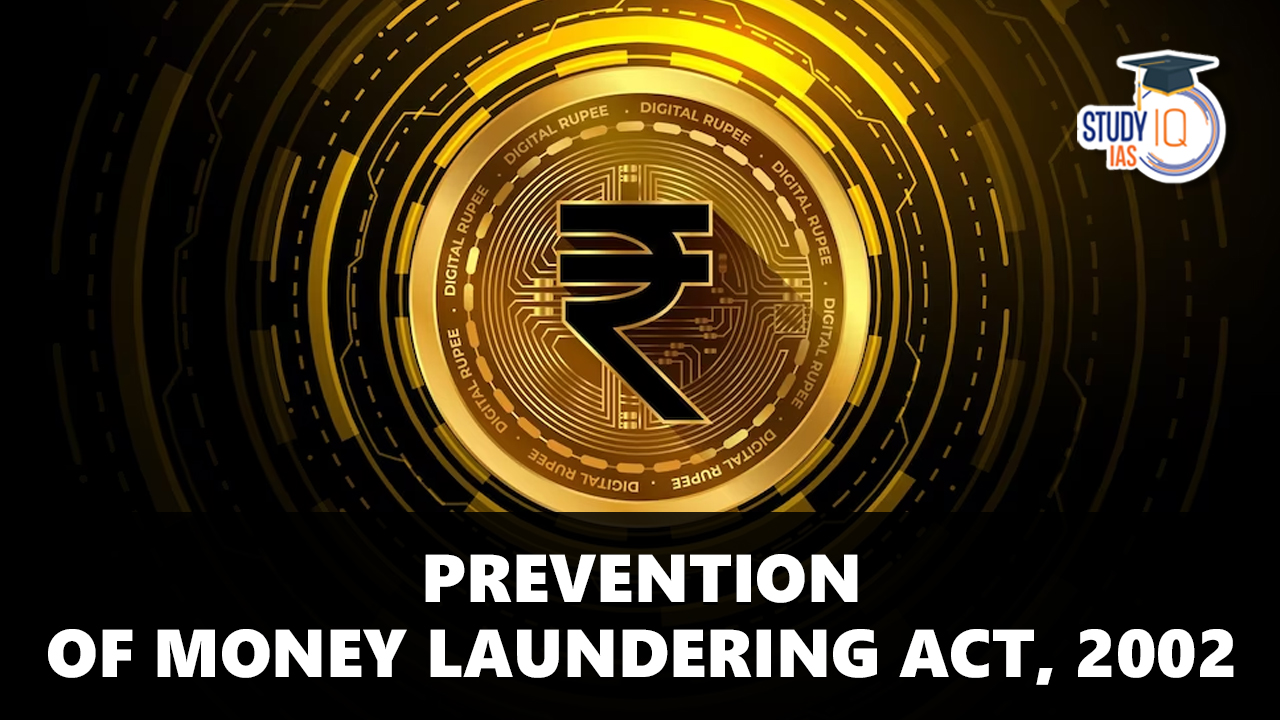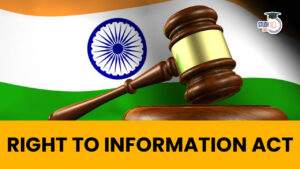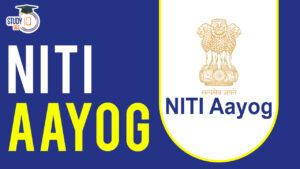Table of Contents
Delhi’s former Chief Minister Arvind Kejriwal and Congress MP P. Chidambaram have sought relief from their respective trials, citing a recent Supreme Court ruling as a precedent.
About Recent Supreme Court Ruling
- Recently the SC has ruled that prior government sanction is mandatory for prosecuting public servants under the Prevention of Money Laundering Act if the alleged offenses are linked to their official duties.
- This is based on Section 197 of the Criminal Procedure Code (CrPC).
- Section 65 of the PMLA aligns with CrPC Section 197, requiring prior sanction for public servants.
About Prior Sanction Provision under Section-197 of CrPC
- Bars prosecution of public servants (including judges, magistrates, or government officials) without prior sanction from the government for acts done in the discharge of their official duties.
- Exceptions: No prior sanction is needed for crimes like sexual harassment, rape, human trafficking, and similar serious offenses.
- Application to Public Servants: Only acts related to their official duties are protected; acts outside their duties do not receive this shield.
- Related Case: In the Devinder Singh v. State of Punjab (2016) case, the Supreme Court held that public servants cannot hide behind official duties if they are committing crimes.
Impact of the Prior Sanction Requirement:
- Implications for ED Cases:
- Investigations under the PMLA will remain valid, but trial courts cannot take cognizance of chargesheets against public servants without prior sanction.
- Public servants facing charges may use the absence of prior sanction as a defense, resulting in stay orders or dismissals of cases.
- Public servants can raise this argument at any stage of the trial, even post-conviction (P K Pradhan v. State of Sikkim, 2001).
- Challenges to Prosecution: Prosecution agencies may face delays as they are required to secure government approval before proceeding with cases.
Prevention of Money Laundering Act, 2002
The Prevention of Money Laundering Act, 2002 (PMLA) was created to combat the crime of making illegal money appear legal. This law allows the government to seize property obtained from illegal activities. In simple terms, money laundering is the process of turning illegally earned money into money that looks legitimate.
What is Money Laundering?
Money laundering is the process of making illegal money (often called black money) look legal (or white money). This is done by moving the money through different channels to create a false appearance of legality, eventually depositing it in legitimate institutions like banks.
Common Forms of Money Laundering
| Some common methods include: |
|
Background of PMLA 2002
The background of the Prevention of Money Laundering Act (PMLA) is rooted in India’s global commitments and efforts to combat money laundering. The enactment of the PMLA was a response to various international agreements and initiatives, including:
- United Nations Convention Against Illicit Traffic in Narcotic Drugs and Psychotropic Substances 1988: India’s commitment to addressing illicit drug trafficking and related money laundering activities.
- Basle Statement of Principles, 1989: International guidelines that promote effective measures to combat money laundering and enhance financial system integrity.
- Forty Recommendations of the Financial Action Task Force on Money Laundering, 1990: Internationally recognized standards and measures to combat money laundering and terrorist financing.
- Political Declaration and Global Program of Action adopted by the United Nations General Assembly in 1990: Global efforts to combat money laundering and strengthen international cooperation in this regard.
These international commitments and guidelines influenced India’s decision to enact the PMLA, reflecting the country’s dedication to addressing the menace of money laundering. The PMLA serves as a legal framework to prevent, detect, and prosecute money laundering offences in line with global best practices and international obligations.
The PMLA plays a crucial role in the fight against money laundering, providing a legal framework to combat illicit financial practices and ensure the integrity of financial systems. It aims to create a deterrent effect and promote transparency in financial transactions to safeguard the economy.
Objectives of PMLA
The Prevention of Money Laundering Act, of 2002 was created to address money laundering. Its key objectives include:
- Preventing and controlling money laundering.
- Confiscating property linked to money laundering.
- Punishing offenders involved in money laundering.
- Appointing authorities to handle money laundering cases.
- Requiring banks and financial institutions to keep records of financial transactions.
- Managing other related issues concerning money laundering.
Offences under PMLA
The Prevention of Money Laundering Act (PMLA) incorporates various provisions categorized under Part A, Part B, and Part C of the Schedule, which addresses offences related to money laundering.
| Category | Details |
| Part A | Part A includes offences specified in acts such as the Indian Penal Code (Section 420), Prevention of Corruption Act (Section 13), Narcotic Drugs and Psychotropic Substances Act (Section 24), Antiquities and Art Treasures Act (Section 25), Trademark Act (Section 103), Wildlife Protection Act (Section 51), Copyright Act (Section 63), and Information Technology Act (Section 66). |
| Part B | Part B encompasses offences mentioned in Part A but with a value equal to or exceeding Rs 1 crore. These offences are subject to stricter scrutiny under the PMLA. |
| Part C | Part C focuses on trans-border crimes, including cross-border money laundering activities and offences with an international dimension. |
These provisions listed in the Act ensure that offences related to money laundering, as outlined in Part A, Part B, and Part C of the Schedule, are subject to the provisions and penalties outlined in relevant sections of the Prevention of Money Laundering Act, including Section 3 (Offense of money laundering) and Section 8 (Attachment and confiscation of property involved in money laundering).
Penalties under the Prevention of Money Laundering Act, 2002
Under the Prevention of Money Laundering Act, 2002, authorities can take action against anyone guilty of money laundering. Some penalties include:
- Freezing or seizing cash, bank accounts, investments, and property obtained through illegal means.
- A minimum of 3 years and a maximum of 7 years of rigorous imprisonment, or a fine.
- If the money laundering involves drugs or relates to the Narcotic Drugs and Psychotropic Substances (NDPS) Act, 1985, the penalty can increase to up to 10 years in prison and a fine.
Authorities for Investigation
- Enforcement Directorate (ED): This agency investigates money laundering cases in India and operates under the Ministry of Finance.
- Financial Intelligence Unit-India (FIU-IND): An autonomous body that analyzes suspicious economic transactions and works with national and international agencies to combat money laundering.
- Other Agencies: Local police, CBI, customs, SEBI, and other agencies investigate specific offenses as needed.
Recent Legislation and Amendments to PMLA
Focus on Drug Money: Initially, the PMLA focused primarily on laundering money from drug trafficking, based on FATF recommendations and UN declarations.
Enactment Under Legal Framework
- Article 253 Authorization: The Indian Parliament enacted the PMLA in 2002 based on Article 253, which allows for implementing international conventions into domestic law.
- Additionally, Item 13 in the Union list of the Seventh Schedule specifically empowers legislation on money laundering, focusing on drug money due to the context of UN resolutions.
Expansion Through Amendments
- Broadening of Scope: Amendments have expanded the PMLA to include offences beyond drug money, incorporating crimes listed in the Indian Penal Code (IPC) and special laws.
- Operational Shift: The linkage of money laundering to scheduled offences broadens the Act’s application, deviating from its original focus on drug trafficking.
Concerns Related to PMLA
- Original Intent: Initially aimed at drug-related money laundering, the Act now encompasses a wide range of offences, diluting its original purpose.
- Application to Lesser Offences: Offences not inherently tied to significant economic disruption, such as those under the Prevention of Corruption Act, 1988, are also tried under the PMLA.
- Presumption of Guilt: Contrary to the principle of “innocent until proven guilty,” the PMLA presumes accused individuals guilty, impacting bail decisions.
Bail Provision Concerns
- Nikesh Tarachand Shah vs Union of India (2018): The Supreme Court declared Section 45 of the PMLA unconstitutional for violating Articles 14 and 21, due to its restrictive bail provisions.
- Legislative Amendments Post-Judgment: Reacting to the 2018 judgement, Parliament amended the PMLA, reinstating Section 45 with changes aimed at aligning with constitutional norms.
- Vijay Madanlal Choudhary vs Union of India (2022): This Supreme Court judgement upheld the amended Section 45, justifying its strict bail conditions as aligned with the PMLA’s aims, marking a significant moment in the Act’s judicial review.
Key Amendments
- 2009 Amendment:
- Added “criminal conspiracy” (IPC Section 120B) to PMLA schedule.
- Allows ED to enter cases alleging conspiracy, even if the main offence isn’t covered by PMLA.
- Example: ED taking over land-grabbing FIRs in Jharkhand against former CM Hemant Soren (currently jailed).
- Gave ED international jurisdiction for tracking laundered money.
- 2012 Amendment:
- Moved Prevention of Corruption Act (PCA) from PMLA schedule Part B to Part A.
- This applied stricter bail conditions for corruption accusations (Section 45(1)).
- Requires the court to be satisfied that the accused is unlikely to commit crimes if granted bail.
- Previously only applied to offences like waging war or drug trafficking.
- Now applies to PCA, wildlife protection, human organ transplants, and more.
- Example: NCP leader Chhagan Bhujbal (arrested 2016) denied bail for over two years under this amendment.
- Other Impacts of Amendments:
- Expanded money laundering definition to include concealment, acquisition, possession, and use of proceeds of crime.
- Presumption of money laundering for detected proceeds of crime (unless proven otherwise).
- Potential for individuals to be implicated for unknowingly receiving or using tainted money.
| Section 45 of the Prevention of Money Laundering Act, 2002 (PMLA) |
Twin Conditions for Bail
No Likelihood of Committing Offence on Bail: Additionally, the court must be convinced that the accused is not likely to commit any offence while on bail. |
Judicial Perspective on Bail
- Supreme Court Rulings: The Supreme Court’s approach to bail under the PMLA has evolved, with recent rulings upholding stringent bail provisions as reasonable and aligned with the Act’s objectives.
- Impact on Personal Liberty: The Act’s approach to bail, and its presumption of guilt, raises concerns about the impact on personal liberty and the principle of judicial discretion in granting bail.
Supreme Court’s Stance
- Supreme Court Validation: On July 27, 2022, the Supreme Court, led by Justice A M Khanwilkar, affirmed the constitutional validity of the PMLA amidst challenges from over 200 petitions.
- It affirmed the Enforcement Directorate’s operations outside the CrPC’s purview.
- Stringent Bail Standards: Section 45 of the PMLA sets tough criteria for bail, where the accused must demonstrate no prima facie case against them and that they will not commit any offence in the future.
- 2017 Supreme Court Judgement: The court initially deemed Section 45 unconstitutional in Nikesh Tarachand Shah v Union of India.
- Parliamentary Amendment and Reinstatement: Following the 2017 judgement, Parliament reinstated Section 45 via the Finance Act, 2018, which was later upheld by the Supreme Court in 2021.
- Ongoing Review: Parts of the 2021 ruling are currently under review, but there is no stay on the judgement, making it the prevailing law.


 Right To Information Act, Objective, Fea...
Right To Information Act, Objective, Fea...
 Indian Councils Act 1861, History, Provi...
Indian Councils Act 1861, History, Provi...
 NITI Aayog Report on India’s Hand and ...
NITI Aayog Report on India’s Hand and ...





















